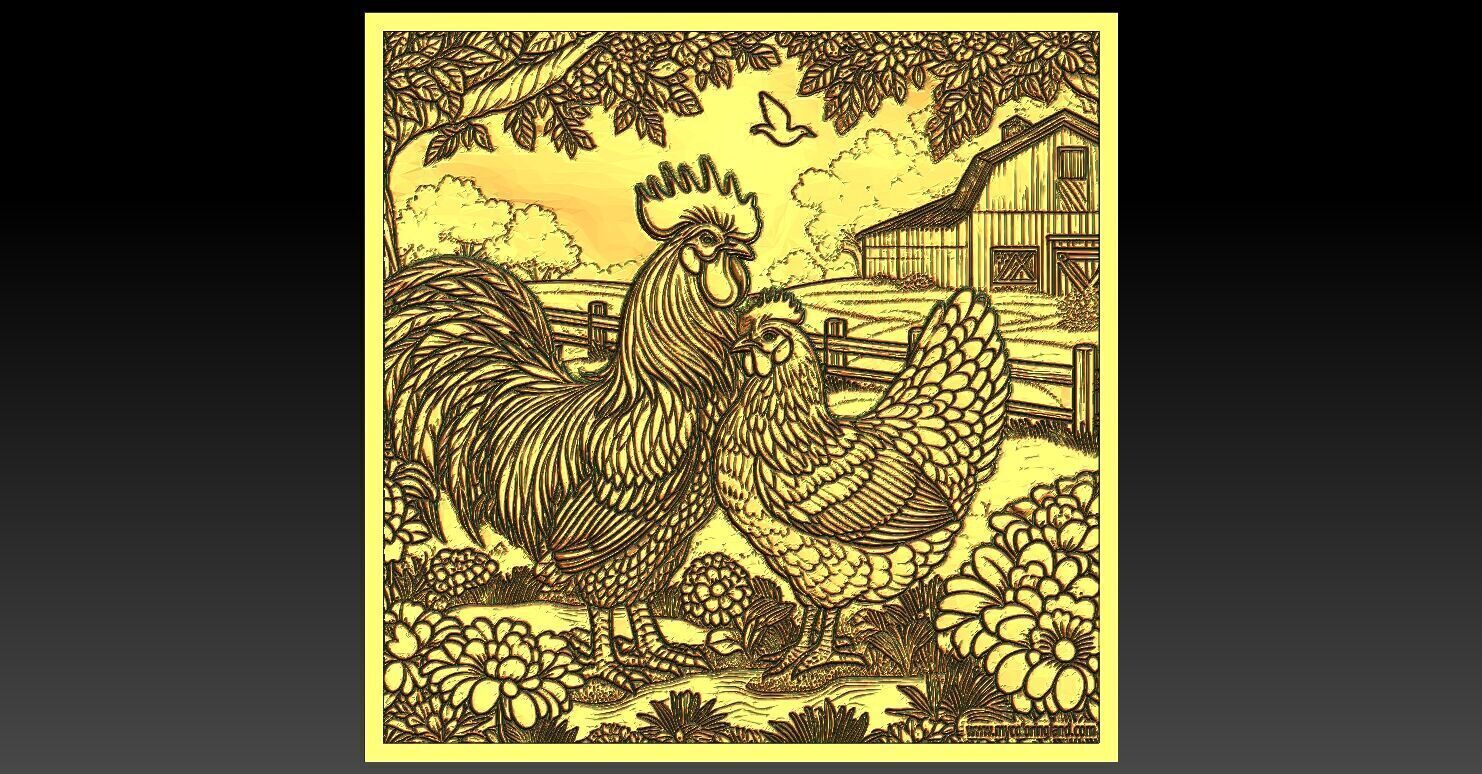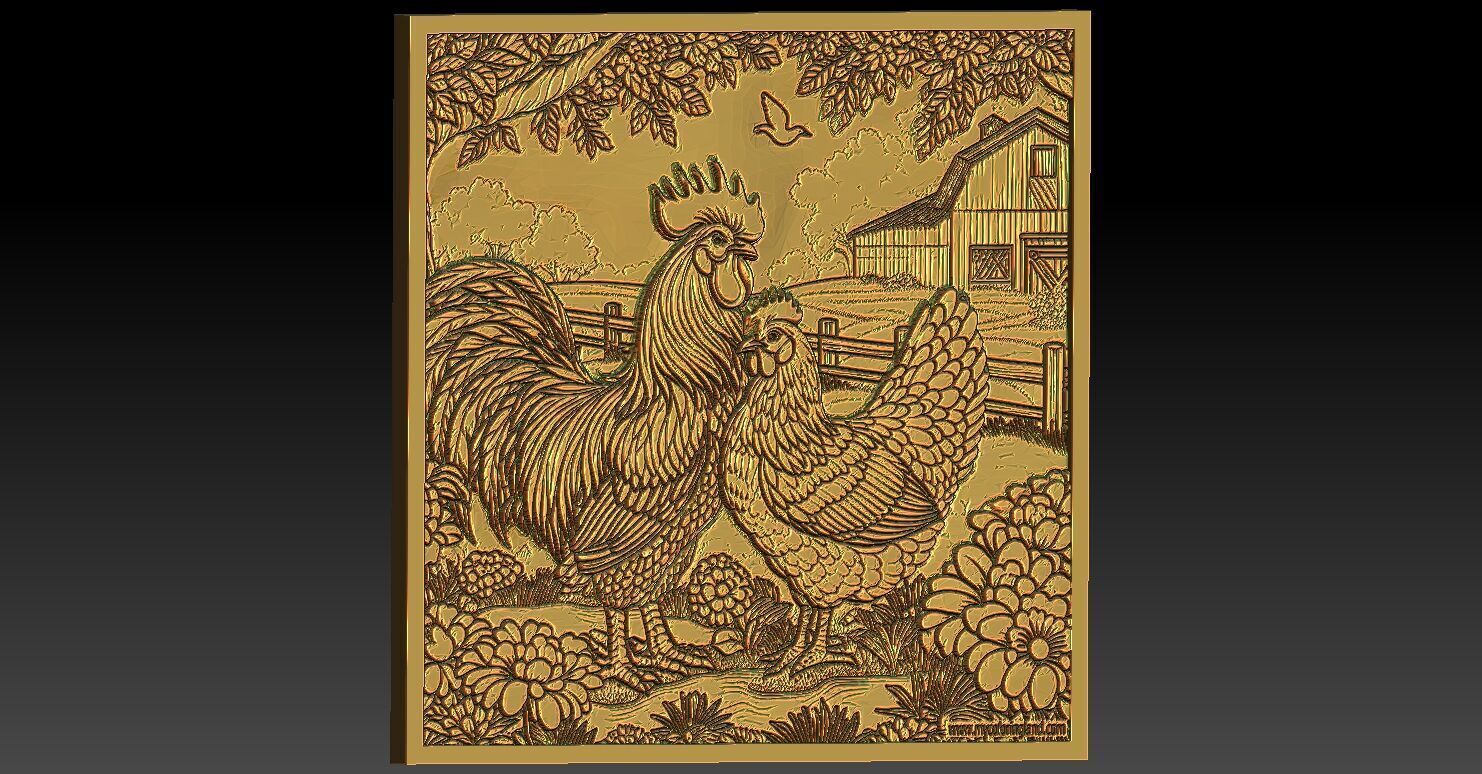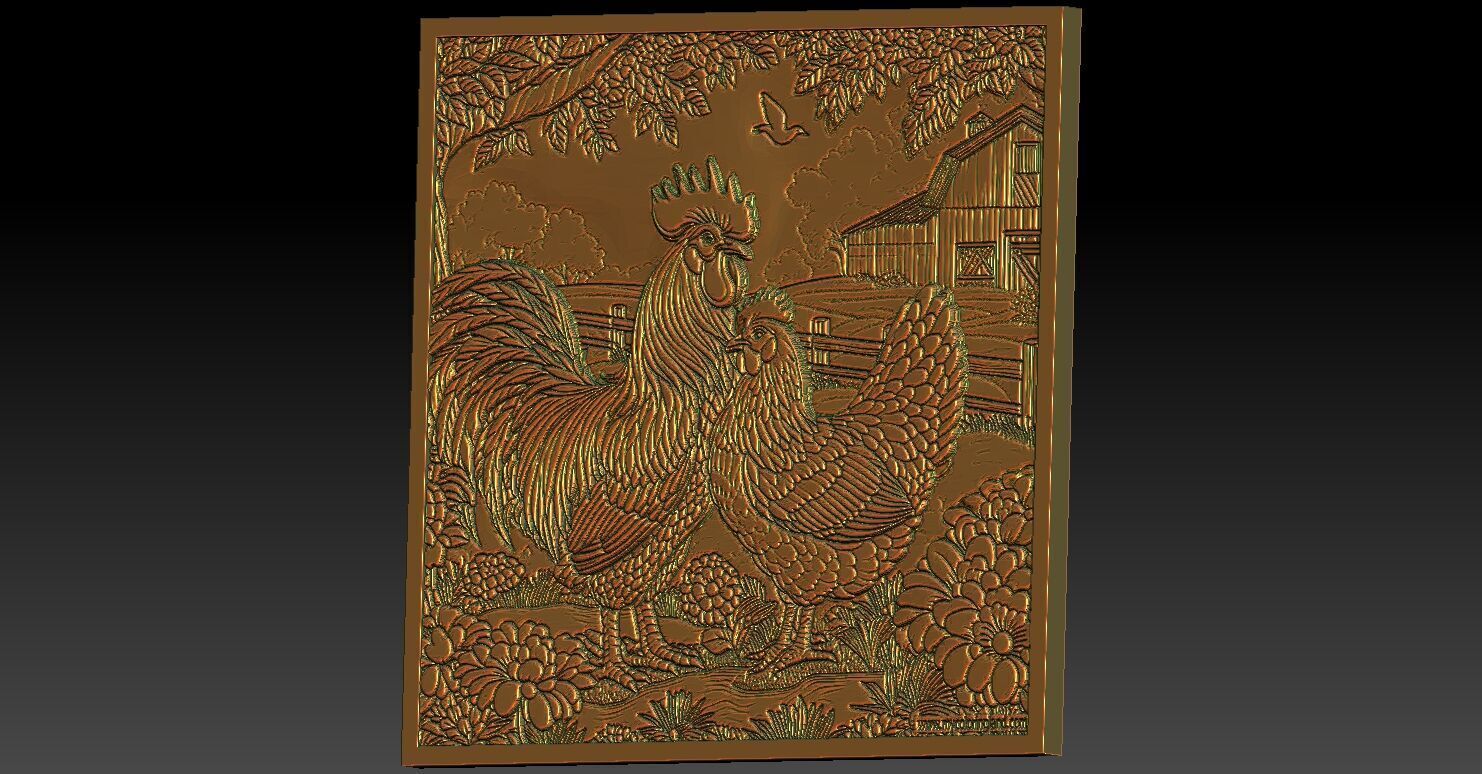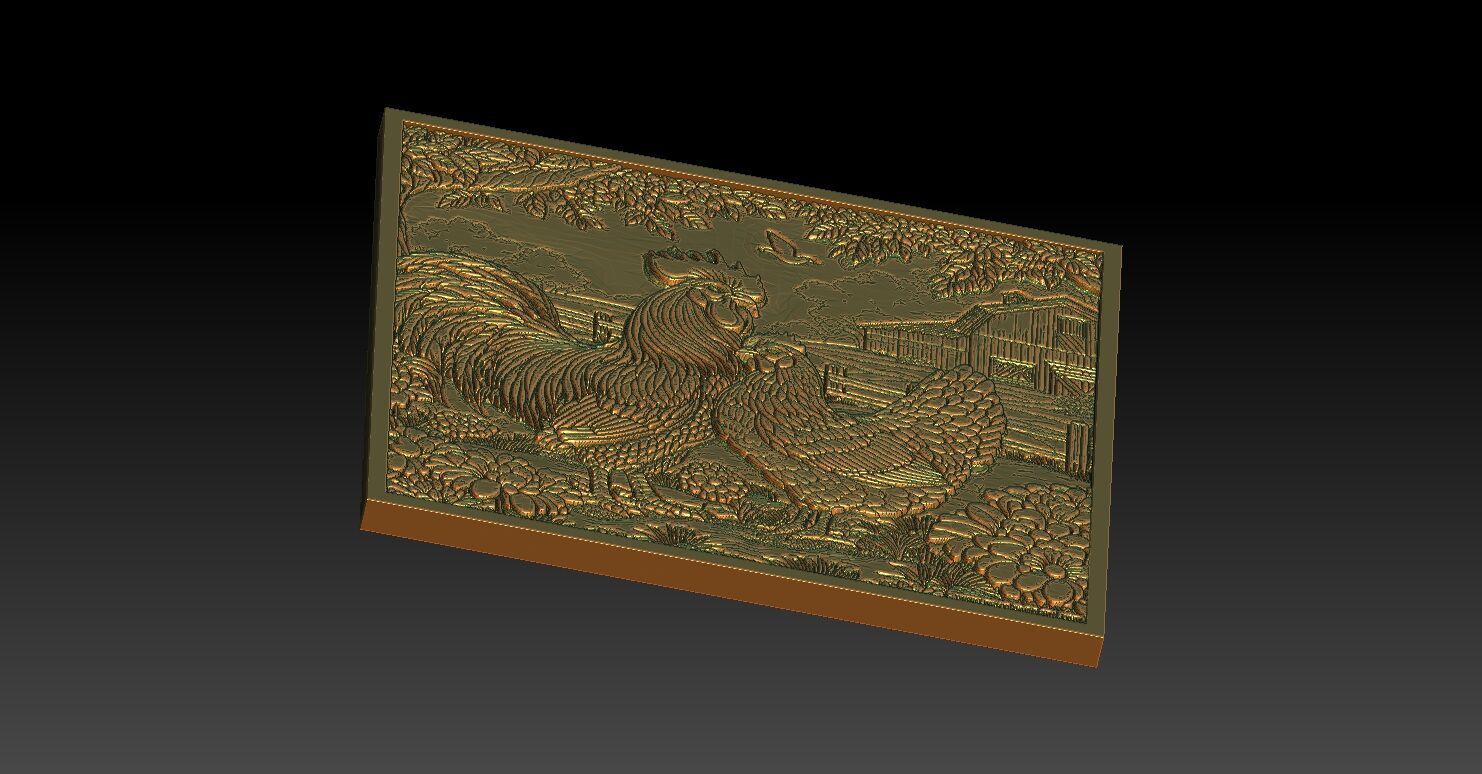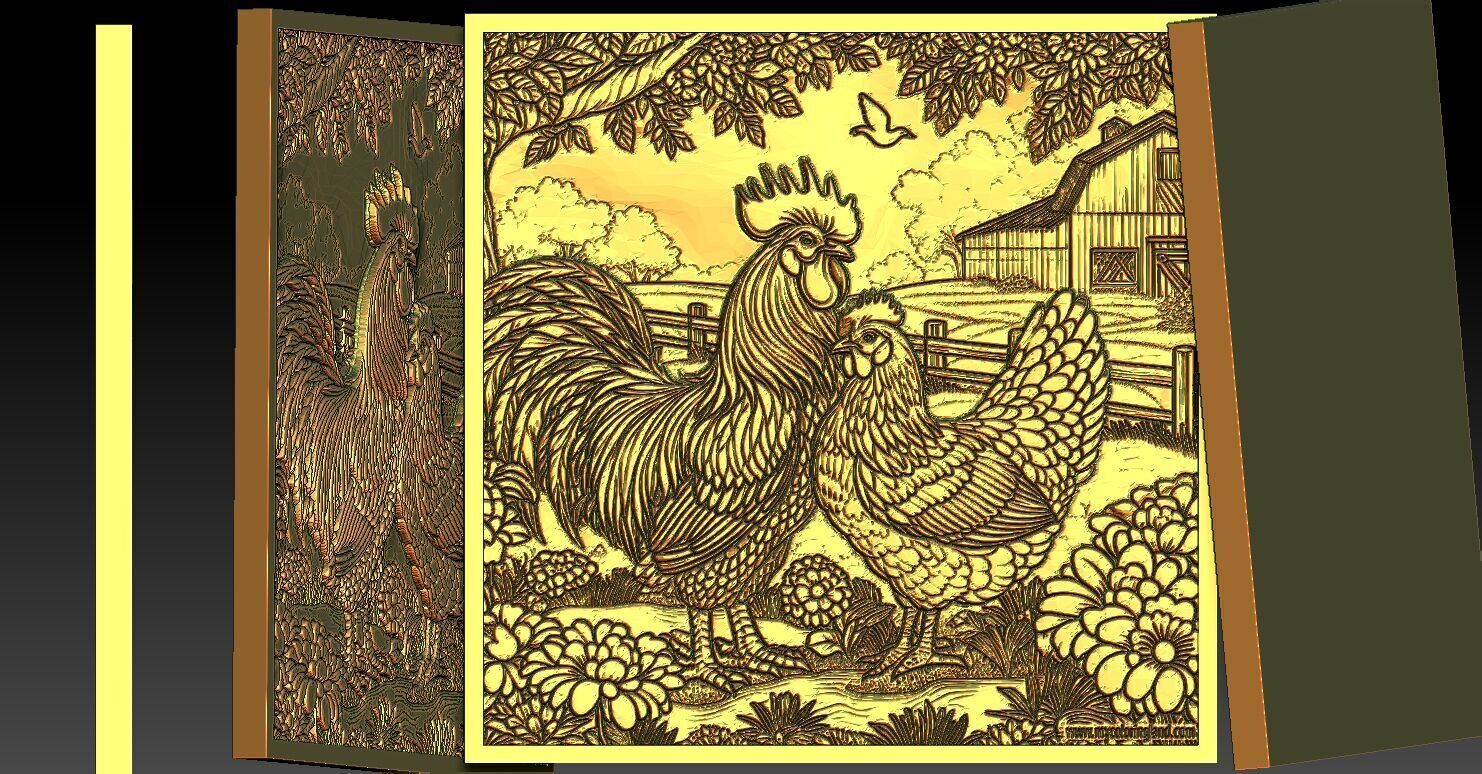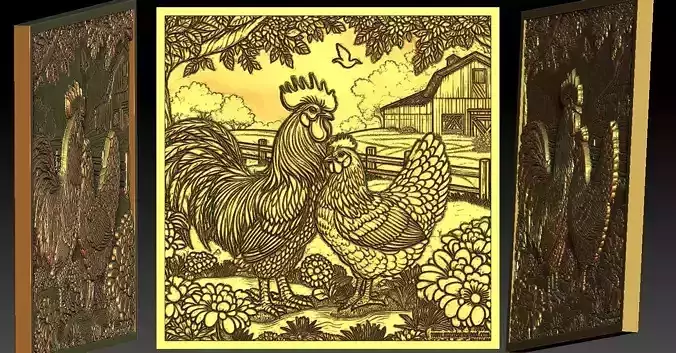
1 rooster and hen CNC Relief 3D print model
In art, paintings featuring roosters and hens often carry symbolic meanings related to good fortune, prosperity, courage, and fertility. The rooster, in particular, is associated with daybreak, vigilance, and protection, while hens can symbolize nurturing and femininity. These symbols can vary across cultures and time periods, reflecting different beliefs and customs. Here's a more detailed look at the symbolism:Rooster:Daybreak and Vigilance:The rooster's crowing at dawn symbolizes the end of darkness and the beginning of a new day, representing alertness and the dispelling of evil. Prosperity and Good Fortune:In many cultures, the rooster is seen as a symbol of good luck and prosperity, often associated with celebrations and new beginnings. Courage and Protection:The rooster's role in protecting its flock also translates to symbolic meanings of courage and protection. Chinese Zodiac:In the Chinese zodiac, the rooster is a symbol of fidelity and punctuality. Hen:Nurturing and Fertility: The hen, as a mother figure, embodies nurturing, fertility, and the cycle of life.Femininity: The hen is often associated with feminine energy and characteristics.Connection to Agriculture: Chickens and roosters are integral to agricultural life, representing sustenance, hard work, and the cycle of harvest. Overall:Religious Symbolism:In some cultures and art periods, like Baroque art, roosters can have religious symbolism, representing vigilance against sin or even papal authority. Gender Roles:The contrast between the rooster and hen can also be interpreted as a representation of masculine and feminine energies and roles. Artistic Expression:Artists use roosters and hens to convey various emotions and themes, from love and courtship to social commentary. By understanding these symbolic meanings, viewers can gain a deeper appreciation for the richness and complexity of rooster and hen paintings.

